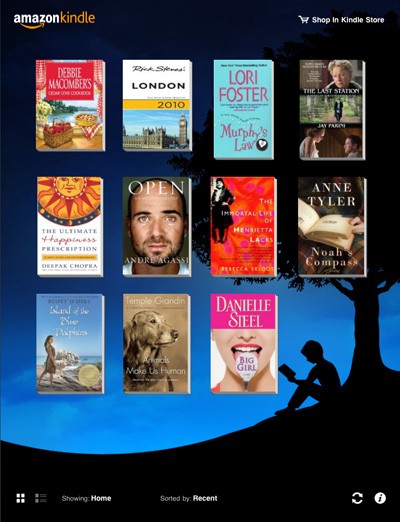I love Barnes and Noble: It’s a genuinely pleasant place to hang out, have a coffee, and browse books. It’s got a great selection, the bargain books are numerous and interesting, and the folks are nice.
In short, the place is wonderful… It’s just that I find I’m drinking a lot of coffee there, doing a lot of browsing, and not doing a ton of actual book buying.
So what gives? It goes back to my previous article on ebooks which predated the release of Barnes and Noble’s Nook e-reader. As soon as I heard about the Nook, I put one down on order and waited for months on tenterhooks for it to arrive.
But then it showed up, and the trouble began.
For starts, the reader itself is executed about as adroitly as I execute a triple lutz. After a bottle of Cuervo. While wearing wooden clogs stolen from a little Dutch girl.
But no worries, it’s software updateable over the air, and surely the team will get around to fixing the bizarre navigation and control issues that make finding a book in your library only slightly less complicated than opening a Chinese puzzle box.
No the real killer is Barnes and Noble’s insane eBook pricing scheme. Let’s compare and contrast a couple of books I would dearly love to buy from Barnes and Noble, but will almost undoubtedly buy from Amazon instead.
Let’s start with Juliet, Naked, the new Nick Hornby novel. I’ve been a sucker for just about anything this guy writes, ever since High Fidelity, and I was really looking forward to loading up my new Nook with it. The list price of the hardcover is $25.95, and Barnes and Noble offers the hardcover in physical form for $18.68.
But in what can only be a cunningly executed joke which sailed right over my philistine head, they decided to price the ebook version at…$18.53.
You read that right: a whopping fifteen cents less than the actual hardcover.
Similar high-priced humor was on display in their ebook release of Traffic: Why We Drive the Way We Do (And What Says About Us), the book I cited when I first contemplated buying the Nook in the first place. That one’s out in paperback now, for $11.52, but lucky me, I can also get it in ebook format now for my Nook for just… $11.88. It actually costs more to buy it in digital form!
Amazon.com, on the other hand, offers both books in digital form for $9.99 each. Obviously, they’re not sophisticated enough to get Barnes & Noble’s no-doubt-hilarious pricing joke either. But as I wait for someone to explain it to me, I’ll be downloading both books onto my Kindle, having bought them from my lowbrow reading buddy Amazon.
Barnes and Noble, I’m begging you: get a clue on this whole “selling digital goods” thing, and do it fast. (And the same goes for you, Apple, if you’re tempted to follow in their footsteps). Otherwise, I find it all too easy to picture myself in your store a couple of months from now drinking your coffee while I read the latest novel I bought from Amazon–on the Kindle reader on my new iPad.
Your coffee’s top notch… but wouldn’t it help you to be able to sell me the occasional book as well?

![100324-ATTMicroCell-hmed-128p.widec[1]](https://peterbickford.com/wp-content/uploads/2010/04/100324-attmicrocell-hmed-128p-widec1.jpg)


